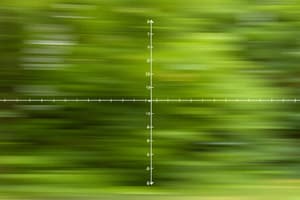Podcast
Questions and Answers
To describe and analyze complex motions, we need a tool called ____________.
To describe and analyze complex motions, we need a tool called ____________.
vectors
One fundamental concept related to vectors is ____________ displacement.
One fundamental concept related to vectors is ____________ displacement.
vector
A displacement vector has both a magnitude (__________) and a direction.
A displacement vector has both a magnitude (__________) and a direction.
length
The sum of multiple displacements is known as the resultant ____________ vector.
The sum of multiple displacements is known as the resultant ____________ vector.
Vector addition is the process of combining two or more vectors to obtain a resultant ____________.
Vector addition is the process of combining two or more vectors to obtain a resultant ____________.
To add vectors, their starting points must ____________.
To add vectors, their starting points must ____________.
The magnitude of a displacement vector represents the ______ traveled
The magnitude of a displacement vector represents the ______ traveled
Vectors are crucial in physics to represent various physical quantities such as displacement, velocity, acceleration, and ______
Vectors are crucial in physics to represent various physical quantities such as displacement, velocity, acceleration, and ______
When analyzing complex vector problems, it is often advantageous to decompose a vector into its ______
When analyzing complex vector problems, it is often advantageous to decompose a vector into its ______
Understanding vector displacement is essential to comprehending motion in ______
Understanding vector displacement is essential to comprehending motion in ______
Incorporating vectors in our analysis of physical phenomena allows us to better understand and describe complex ______
Incorporating vectors in our analysis of physical phenomena allows us to better understand and describe complex ______
The displacement vector provides both the ______ and direction information
The displacement vector provides both the ______ and direction information
Study Notes
Understanding Vector Displacement in Physics
In our physical world, motion involves changes in both distance and direction. To describe and analyze these complex motions, we need a tool called vectors. One fundamental concept related to vectors is vector displacement. By dissecting this concept, we'll delve into topics such as resultant displacement, vector addition, distance and direction, and vector components.
Resultant Displacement
When an object moves from point A to point B, the vector representation of this movement is called the displacement vector. A displacement vector has both a magnitude (length) and a direction. The magnitude corresponds to the distance the object travels, while the direction indicates the path taken.
To find the total displacement when an object experiences multiple displacements, we add the vectors. The sum of these displacements is known as the resultant displacement vector. The resultant displacement is the vector that points to the final position of the object from the initial position.
Vector Addition
Vector addition is the process of combining two or more vectors to obtain a resultant vector. To add vectors, their starting points must coincide, and they are then added component-wise.
[ \vec{R} = \vec{A} + \vec{B} = (A_x + B_x, A_y + B_y, A_z + B_z) ]
In this equation, (\vec{A}) and (\vec{B}) are the vectors being added, and (\vec{R}) is the resultant vector.
Distance and Direction
The magnitude of a displacement vector represents the distance traveled. The direction of the vector indicates the path taken. Hence, the displacement vector provides both the distance and direction information.
Vectors in Physics
Vectors are crucial in physics to represent various physical quantities such as displacement, velocity, acceleration, and force. Vectors have both magnitude and direction, making them perfect to describe physical phenomena that involve more than just a scalar quantity.
Vector Components
When analyzing complex vector problems, it is often advantageous to decompose a vector into its components. There are three common methods to achieve this:
- Cartesian Component Method: Components in the direction of the Cartesian axes (x, y, z).
- Cylindrical Component Method: Components in the direction of radius (r), angle (θ), and z-axis.
- Spherical Component Method: Components in the direction of radius (r), azimuth (φ), and angle (θ).
Each of these methods has its own set of advantages and disadvantages, and they are used depending on the problem at hand.
Conclusion
In summary, understanding vector displacement is essential to comprehending motion in physics. The resultant displacement, vector addition, distance, direction, and vector components are fundamental aspects of this concept. Incorporating vectors in our analysis of physical phenomena allows us to better understand and describe complex movements.
Studying That Suits You
Use AI to generate personalized quizzes and flashcards to suit your learning preferences.
Description
Test your knowledge on vector displacement in physics by exploring topics such as resultant displacement, vector addition, distance and direction, and vector components. Understand how vectors are crucial in representing physical quantities like displacement, velocity, acceleration, and force.




